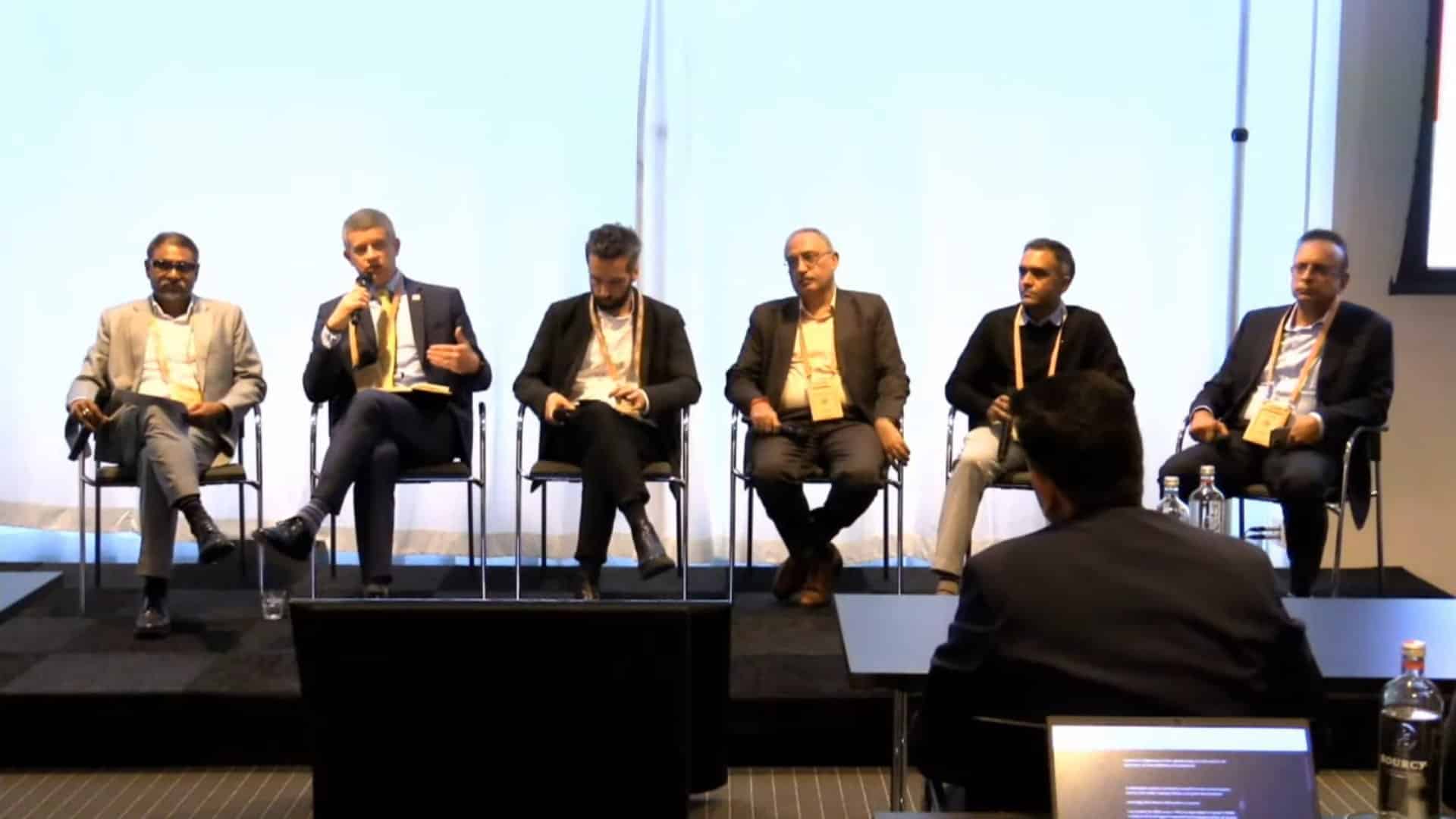With globalization becoming key for the growth of world economies, collaboration has come as a boon. As we make partnerships more accessible and open, the gates for innovation and tech advancements open.
An India-Europe Space and Geospatial Business Summit was held on the first day of the Geospatial World Forum 2024 to discuss the opportunities and importance of collaboration between and within the government mapping agencies and private players.
Moderated by Sanjay Kumar, CEO and Founder, Geospatial World, the session discussed how a more interoperable world can be the solution for a plethora of problems we face today in the realms of geopolitical conflicts and economic growth.
Discussing how we are in an age of data abundance, David Henderson, Chief Geospatial Officer, Ordnance Survey, “There is an abundance of data from the different sectors, availability of daily source of imagery and data. However, incorporating this data into the national map is still a challenge.”
“To go from sensor to customer within a matter of hours at scale for national system and to maintain it is still a huge challenge,” David emphasized.
He then reiterated how the foundational geospatial data in Great Britain can be better in terms of enrichment, quality, improvement, and fundamental interoperability, which would be incremental.
Crucial Partnerships
Rudy Cambier, Chief of Innovation and Industrials Partnerships Department (France and International), IGN France said, “Industrial partnerships are crucial for French Mapping Agency in two ways. First to help us and innovate in various activities. To collect and mix different data to provide a holistic view.”
“IGN France now is climate cartographer. We map the climate change and its impact on our territory. It is very important and a new paradigm for us. We also work on automatization process. And on tech mix and satellite imagery, we work with CNES and the private sector.”
“The second way, to work with the private sector through strategic partnership to reuse the data and develop tools and services to help French public policy. It is very important for us given the climate change challenges,” he added.
Continuing on the mix of collaboration and innovation, Anup Jindal, CEO, RMSI said, “We see a mix of innovation and capacity as the dire need currently. We are talking about self-healing world, wherein ideally, the maps around the world would keep on updating themselves as fast the world is changing which is a big challenge for mapping agencies and the private sector.”
“The second we see is interoperability. There are so many organisation and companies that are working on similar things. If there was a way for more standardisation, it would translate into wider availability of resources for innovation and newer applications.”
He added, “The third is the integration of new age technologies. There is a lot of talk about AI, ML, new sensors and different types of data, how do we bring this into the whole production workflow. Broadly these are the big three areas for us.”
Avinash Viswanathan, Senior Vice President, Sales and Marketing at DSM Softech said, “There has been a shift over the past 2 decades wherein data creation has changed to maintaining the currency of data. As now we see though, there is no dearth of geospatial data, so the amount of data available for processing is humongous.”
“As a company what we see today is we are focusing on data readiness and that is what government and private organisations are looking for from companies like us.”
He then explained that data readiness is a process of converting raw data into a fit-for-use purpose so that the strategic objectives of different organizations are met.
Government’s Role
Focusing on the government’s role in expediting geospatial and space for the benefit of all, Gen Girish Kumar, Former Surveyor General of India said, “There has been a push for Digital India by the government. Geospatial cannot be separated from this initiative.”
He shed light on how in 2018, India did not have a single drone manufacturing company, “but today we have hundreds which are not only supplying locally but exporting drones as well.”
“The government of India has launched many programs, whether it is by the land resources ministry, urban affairs, agriculture, national mapping and the department of science and technology, which are all taking very good initiatives in their capacity.”
“For example, our national mapping agency want to map and measure each and every land parcel to a few centimetre in the country. However, it will not be possible if they do it alone, and here we see the need of a big collaborative approach within the government as well as international partnerships,” he explained.









